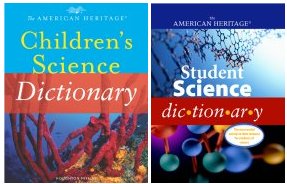Gold’s Glittery Rewards Additional Information
You can learn more about the American Museum of Natural History’s gold exhibit at www.amnh.org/exhibitions/gold/ (American Museum of Natural History).
To find out more about gold (Au) and its place (element 79) in the Periodic Table of chemical elements, go to www.chemicool.com/ (chemicool.com).
Information about uses of gold can be found at www.gold.org/ (World Gold Council).
Sohn, Emily. 2006. Atomic drive. Science News for Kids (Aug. 23). Available at http://www.sciencenewsforkids.org/articles/20060823/Feature1.asp.
______. 2005. Bionic bacteria. Science News for Kids (Oct. 26). Available at http://www.sciencenewsforkids.org/articles/20051026/Note2.asp.
______. 2005. Musclebots take some steps. Science News for Kids (Jan. 26). Available at http://www.sciencenewsforkids.org/articles/20050126/Note3.asp.
LabZone
Specific Gravity
http://www.sciencenewsforkids.org/articles/20050518/LZActivity.asp
Lightweight Thinking
http://www.sciencenewsforkids.org/articles/20050413/LZActivity.asp
Books recommended by SearchIt!Science:
![[book]](https://www.sciencenewsforstudents.org/wp-content/uploads/2019/11/a1377_b1729.jpg) |
Gold (The Elements)
Published by Benchmark Books/Marshall Cavendish, 2000.
Wars have been fought over it, currencies have been based on it, and sacred temples have been decorated with it. Gold, the brilliant metal that never loses its luster, is one of the world’s most valuable substances. Learn about the history of gold—from the early alchemists who tried to turn lead into gold to the modern particle accelerators that actually can turn atoms of lead into gold. The book discusses the chemistry of gold, where and how gold is found, the uses of gold alloys and films, how gold is worked with, and gold’s medical and scientific uses. Find out why gold is so valuable. |
![[book]](https://www.sciencenewsforstudents.org/wp-content/uploads/2019/11/a1377_b2496.jpg) |
Gold: From Greek Myth To Computer Chips
Published by Twenty-First Century Books/Millbrook Press, 2003.
Everybody knows that gold is valuable. But did you ever wonder why? “After all, gold is only a collection of a particular kind of metallic atoms,” the author of this book on the history of gold points out. This book explores humanity’s love affair with gold, beginning with ancient Egyptian gold mining. Learn how gold coins became used as money, how gold appears in Greek and Scandinavian myths, and how the Wizard of Oz is a parable about the gold standard. Trace the rise and fall of alchemy, and find out about gold in the Americas. This book also explains the chemistry and properties of gold as well as its modern uses. Dazzling photographs and illustrations accompany this in-depth look at gold. |
Power Words
chemical element A substance that contains only one type of atom and cannot be broken down into simpler substances. Ninety-two elements are known to exist naturally, and another twenty have been created by scientists. All the elements are arranged in the Periodic Table.
gold A shiny, yellow chemical element that is the most easily shaped of all metals. Gold is a good conductor of heat and electricity and does not rust easily. It is used to make jewelry.
malleable Capable of being shaped or formed, especially by pressure or hammering. Gold, silver, and copper are all malleable metals and are often shaped into coins or jewelry.
Periodic Table A table that arranges all the chemical elements in rows called periods, and columns called groups. Elements are placed in a particular period depending on the number of layers their electrons are in as they move around the nucleus. Elements are placed in a particular group depending on the number of electrons that are available to make bonds with other elements.
Copyright © 2002, 2003 Houghton-Mifflin Company. All rights reserved. Used with permission.
